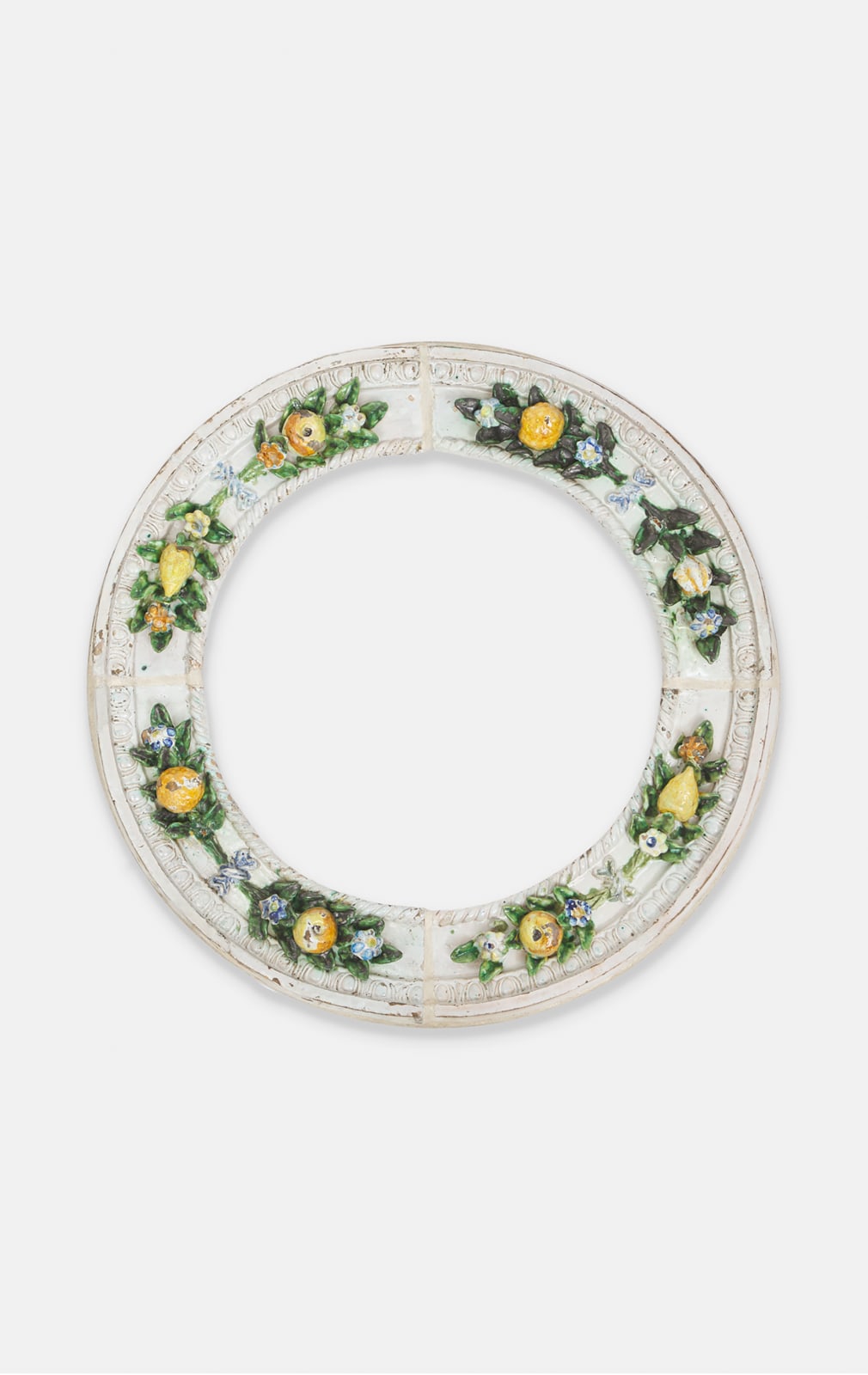-
Artworks

Girolamo della Robbia (1488-1566) (Workshop of)
Roundel decorated with a garland of fruits and flowers, 16th centurypolychrome terracottaDiameter: 29 1/8 in. | 74 cmWith accents of warm yellow, vivid green and cerulean blue set against a background of luminous white, this exquisitely fine glazed earthenware roundel represents an exemplary della Robbia terracotta. Arguably...With accents of warm yellow, vivid green and cerulean blue set against a background of luminous white, this exquisitely fine glazed earthenware roundel represents an exemplary della Robbia terracotta.
Arguably one of the most prominent and well-known families of sculptors from the Florentine Renaissance, the della Robbia family have, since the fifteenth century, become synonymous with the development and highest achievements of the polychrome terracotta technique.
The technique of decorating roundels with garlands of fruits and flowers was first established by Andrea della Robbia (1435–1525) and it was his son Girolamo (1488–1566), in who’s workshop the present work originates, who popularised the technique outside Florence.
In 1517, Girolamo della Robbia was summoned by King François I of France to design and decorate the Royal residence at Château de Madrid near north-west Paris. The Château became so heavily decorated in polychrome terracotta reliefs that it came to be known as the ‘Château de Faïence’. During this period, the King of France commissioned many of the most eminent Italian artist of the day, including Andrea del Sarto, Benvenuto Cellini and Leonardo da Vinci.
Following the commission for the King, Girolamo began to make works for the King’s closest court circle and to decorate other palatial French residences. It is likely the present roundel originated from one such commission.